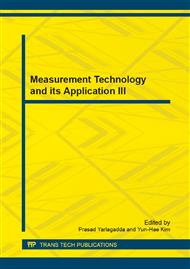p.1059
p.1063
p.1068
p.1073
p.1078
p.1085
p.1090
p.1095
p.1100
The Visual Path Following of Autonomous Catamaran in Oil Spilling
Abstract:
This study aims to design a kind of autonomous oil spill collection device, more exactly, which is a collecting platform based on catamaran for the spilled oil, as catamaran has great superiorities in wave resistance and water resistance. In the whole process, visual path following is necessary, which requires quite precise local navigation; the catamaran has been controlled to run along accurately with a pre-specified path by tracking the visual landmarks on the oil fence; the algorithm for detecting the path is based on an canny operator and a modified Hough transform, which could detect the color guide line more accurate and faster.
Info:
Periodical:
Pages:
1078-1081
Citation:
Online since:
June 2014
Authors:
Keywords:
Price:
Сopyright:
© 2014 Trans Tech Publications Ltd. All Rights Reserved
Share:
Citation:


